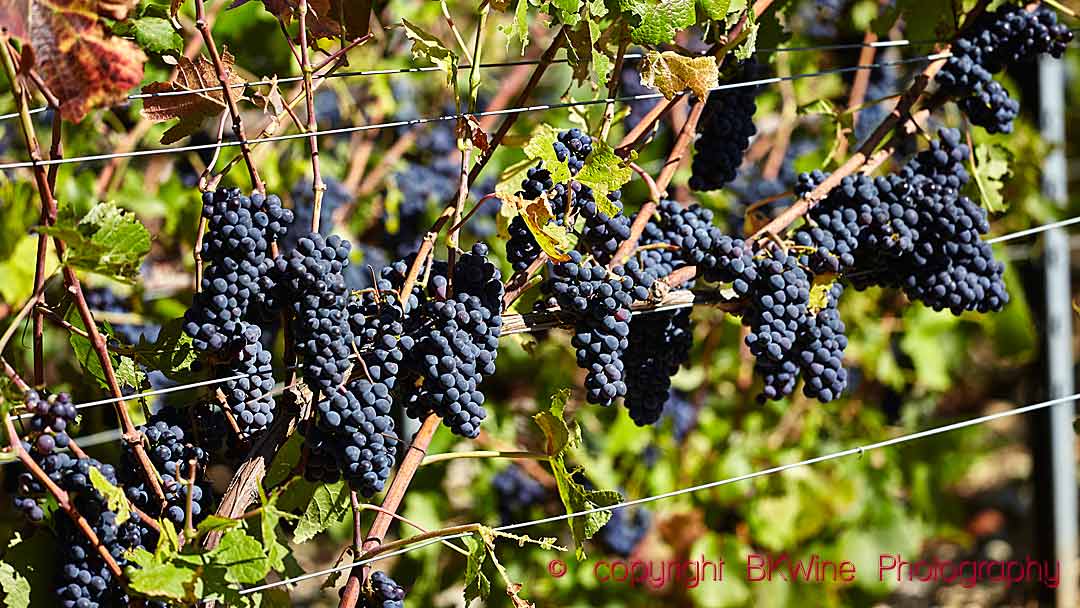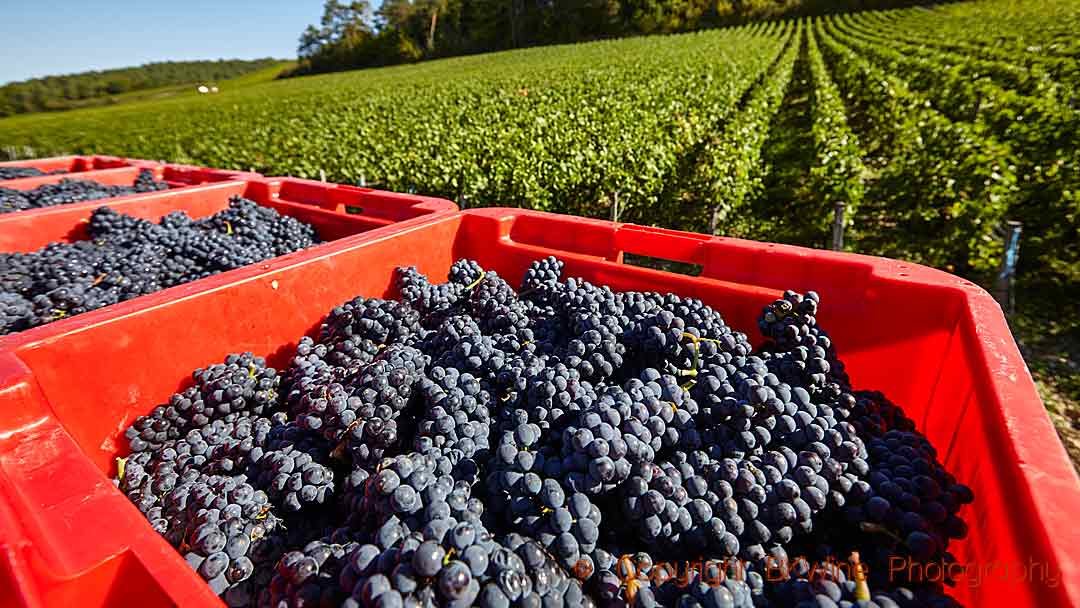The harvest in Champagne started early this year; the earliest villages already on August 20. I went to Champagne Chassenay d’Arce in the Côte des Bar, the southernmost part of Champagne, on the first of September to feel the mood and the atmosphere. And it was electric. Everyone was very excited. The rumours about a shortage of champagne that we’ve heard, although they already at the time were unfounded, can now be put to rest.
“I have never seen such beautiful grapes in such large volume,” says Manuel Hénon, director of Champagne Chassenay d’Arce. “We have had no problems with diseases, and we will be able to harvest the permitted volume of 16,500 kilos per hectare.”
Chassenay d’Arce began harvesting on August 24 and estimates the harvest will take ten days. “We harvest around 500 tonnes of grapes per day,” explains Manuel. Their vineyard surface is 315 hectares.
This is a longer version of an article published on Forbes.com.
A tractor full of grapes ready to be transported to the press room.
It has been a sweltering summer in many places in Europe and also in Champagne. But here, they have been lucky with the rain. In addition to the spring rain, it also rained at the beginning of August; not enough though, so the 30 millimetres that came around August 20 were welcome. The warm and sunny weather has produced colourful grapes, sweet and tasty, with thick skins.
Another effect of the heat that I saw in the vineyards is that the growers have chosen to keep the leaves around the bunches to protect the grapes against solar radiation. In Champagne, it is often the opposite. They remove the leaves in the weeks before the harvest to give the grapes as much sun as possible, but in a very hot and sunny year, like 2022, this risks “buring” the grapes so that they shrivel. (However, they still do remove the leaves just before harvesting, to make it easier for the pickers to access the grape bunches.)
On the not-so-bright side, some younger vines haven’t coped so well with the heat, and we also found grapes in the vineyards that had shrivelled entirely.
All harvest is done manually in Champagne.
Analysis and maturity
Before starting the harvest, the team at Chassenay d’Arce had carefully analyzed grapes from 130 different plots to determine the perfect ripeness. And the ripeness is almost perfect this year. The potential alcohol content is 10–10.5%. At Chassenay d’Arce, it is mostly at 10.5%, so the need to chaptalize this year is small (but is allowed if you feel you need to). During the second fermentation in the bottle, the alcohol content will then increase by a little more than one per cent.
The acidity is vital in a champagne. Despite the heat there is no need to worry this year, assures Sabrine Da Paz, vineyard manager. “The acidity has dropped during the maturation, but it is at a good level and it is stable.”
Also, in Champagne you have the possibility to adapt your winemaking if you think the acidity is lower than usual. You can avoid malolactic fermentation or use a lower dosage. Sabrine doesn’t think these warm summers are a problem for Champagne so far. A bigger problem is the risk of frost in the spring.
Speed in the press room
In Champagne, all grapes are harvested by hand. At Chassenay d’Arce, the harvest workers cut the bunches and put them in small baskets, which they empty into larger 40-50 kilo baskets. As soon as these baskets are full, they will be transported to the press house in the village of Ville d’Arce. The grapes come from 12 villages close by, so there are no great distances.
Once inside the press house, speed is vital. The philosophy is that you should not let the grapes wait but press them as quickly as possible. Chassenay d’Arce has twelve 12,000-kilo pneumatic presses. They are located one level down, and the baskets are emptied into the press by a well-coordinated team. Considering the weight of the baskets, the speed is quite impressive. It takes no more than 25 minutes to fill a press of 12,000 kilos.
On this video you can se many of the details of the harvest. How the grape bunches are cut by hand, then loaded onto a tractor. The amazing speed that everything is done with at the winery. Not surprising in you have 4000-5000 tonnes of grapes to process over a few short weeks. The enormous presses, three times the size of the standard grape press. And the vat cellar with a never-ending array of stainless steel fermentation tanks.
Huge harvest this year
The harvest will be big this year in Champagne, bigger than in a long time. After two difficult years, producers hardly have any reserves left. And the demand for champagne is big.
2020 was a good year, and the harvest was potentially huge, but due to economic uncertainty, the yield was set at only 8,000 kilos per hectare. 2021 was a very challenging year in terms of weather.
All French appellations have a maximum yield (rendemant butoir) that cannot be exceeded. For Champagne, it is 15,500 kilos per hectare. But nothing is set in stone. This year, INAO (Institut national de l’Origine et de la Qualité) has given permission to exceptionally go up to 16,500 kilos. Of these, 12,000 kilos can be made into champagne immediately, and the rest can be put aside as a reserve (in the form of still wine) to be used in future years, which may not be as generous as this one.
Travel
One of the most exciting things with champagne is to discover the many very talented small growers, and the small, quality-oriented houses, visit the vineyards, see the wine cellars, understand how this sparkling wine is made. You will discover several outstanding producers champagnes on a wine tour to Champagne and taste their delicious wines with BKWine.
Travel to the world’s wine regions with the wine experts and the wine travel specialist.
Great wine tours. BKWine wine tours.
Read
If you want to know more about champagne, and find some of the best growers, then you can read our very extensive book on the region: Champagne, the wine and the growers. (Unfortunately only available in Swedish currently.)





















